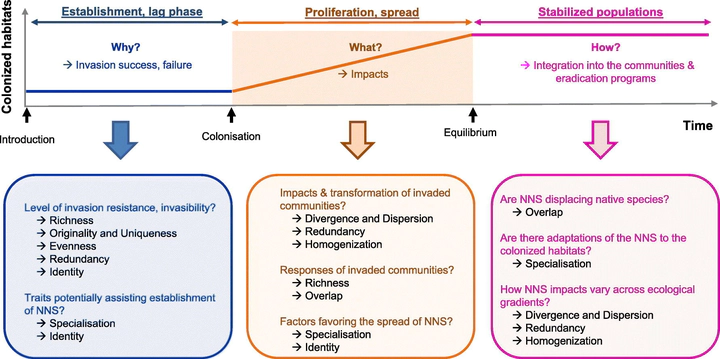 © Renault et al. 2022
© Renault et al. 2022Abstract
Pioneering investigations on the effects of introduced populations on community structure, ecosystem functioning and services have focused on the effects of invaders on taxonomic diversity. However, taxonomic-based diversity metrics overlook the heterogeneity of species roles within and among communities. As the homogenizing effects of biological invasions on community and ecosystem processes can be subtle, they may require the use of functional diversity indices to be properly evidenced. Starting from the listing of major functional diversity indices, alongside the presentation of their strengths and limitations, we focus on studies pertaining to the effects of invasive species on native communities and recipient ecosystems using functional diversity indices. By doing so, we reveal that functional diversity of the recipient community may strongly vary at the onset of the invasion process, while it stabilizes at intermediate and high levels of invasion. As functional changes occurring during the lag phase of an invasion have been poorly investigated, we show that it is still unknown whether there are consistent changes in functional diversity metrics that could indicate the end of the lag phase. Thus, we recommend providing information on the invasion stage under consideration when computing functional diversity metrics. For the existing literature, it is also surprising that very few studies explored the functional difference between organisms from the recipient communities and invaders of the same trophic levels, or assessed the effects of non-native organism establishment into a non-analogue versus an analogue community. By providing valuable tools for obtaining in-depth diagnostics of community structure and functioning, functional diversity indices can be applied for timely implementation of restoration plans and improved conservation strategies. To conclude, our work provides a first synthetic guide for their use in hypothesis testing in invasion biology.